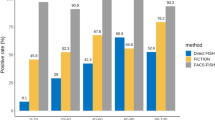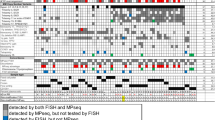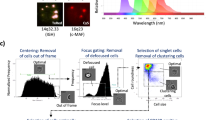Abstract
As in other hematological malignancies, the achievement of a complete remission (CR) is important in multiple myeloma but is still based on common cytological and electrophoretic criteria. In this report, we studied 14 patients who achieved an apparent CR following high-dose therapy using fluorescence in situ hybridization (FISH) analysis. Although the results were difficult to interpret in two patients, 12 of 14 patients had unequivocal persistence of abnormal plasma cells in their bone marrow. Our results suggest that only a few patients, if any, are in true CR following one course of high-dose therapy and are in favor of post-transplantation treatments.
This is a preview of subscription content, access via your institution
Access options
Subscribe to this journal
Receive 12 print issues and online access
$259.00 per year
only $21.58 per issue
Buy this article
- Purchase on Springer Link
- Instant access to full article PDF
Prices may be subject to local taxes which are calculated during checkout
Similar content being viewed by others
Author information
Authors and Affiliations
Rights and permissions
About this article
Cite this article
Genevieve, F., Zandecki, M., Laï, JL. et al. Evaluation of minimal residual disease by interphase FISH in multiple myeloma: does complete remission exist?. Leukemia 13, 641–644 (1999). https://doi.org/10.1038/sj.leu.2401348
Received:
Accepted:
Published:
Issue Date:
DOI: https://doi.org/10.1038/sj.leu.2401348



